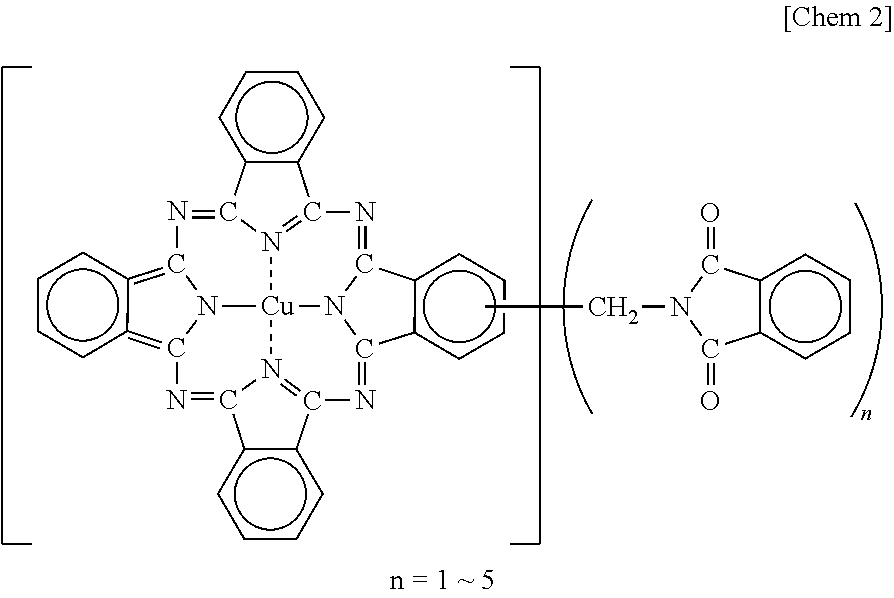Toner
a technology of toner and smearing, applied in the field of toner, can solve the problems of hardly shaved and hardly refreshed latent image bearing members, inability to inhibit the occurrence of image defects with reliability, and inability to improve the prevention of image smearing, etc., to prevent the occurrence of image defects, improve the charging stability, and not deteriora
- Summary
- Abstract
- Description
- Claims
- Application Information
AI Technical Summary
Benefits of technology
Problems solved by technology
Method used
Image
Examples
example 1
[0185]
Binder Resin 1100 parts by massMagnetic iron oxide particles (average particle size 75 parts by massof 0.14 μm, Hc = 11.5 kA / m, σs = 90 Am2 / kg, σr =16 Am2 / kg)Wax (Fisher Tropsch Wax; melting point of 105° C.) 4 parts by massCharge control agent (structural formula I below) 2 parts by mass(Structural formula I)
[0186]The above-mentioned materials were premixed by using a Henschel mixer. After that, the mixture was melted and kneaded by using a biaxial kneading extruder. At this time, a residence time was controlled in such a manner that the temperature of the kneaded resin would be 150° C. The resultant kneaded product was cooled and coarsely ground by using a hammer mill. After that, the coarsely ground product was ground by using a turbo mill, and the resultant finely ground powder was classified by using a multi-division classifier utilizing a Coanda effect, whereby toner particles having a weight average particle diameter of 6.0 μm were obtained.
[0187]1.00 part by mass of a...
examples 2 to 18
[0194]Toners 2 to 18 were each obtained in the same manner as in Example 1 except that a prescription shown in Table 4 was adopted. In addition, Tables 4 to 6 show the results of tests similar to those of Example 1 carried out on the toners.
PUM
| Property | Measurement | Unit |
|---|---|---|
| pore diameter | aaaaa | aaaaa |
| pore diameter | aaaaa | aaaaa |
| specific surface area | aaaaa | aaaaa |
Abstract
Description
Claims
Application Information
 Login to View More
Login to View More - R&D
- Intellectual Property
- Life Sciences
- Materials
- Tech Scout
- Unparalleled Data Quality
- Higher Quality Content
- 60% Fewer Hallucinations
Browse by: Latest US Patents, China's latest patents, Technical Efficacy Thesaurus, Application Domain, Technology Topic, Popular Technical Reports.
© 2025 PatSnap. All rights reserved.Legal|Privacy policy|Modern Slavery Act Transparency Statement|Sitemap|About US| Contact US: help@patsnap.com



